10 Terrible Exercise Habits That Are Causing Your Pain

Everyone knows regular exercise is essential for good health. But certain fitness habits can cause unnecessary pain and discomfort while skyrocketing your injury risk. If you're fit and active yet experiencing pain, you may be among the 21% of Americans who report having chronic pain. Fortunately, we may have the solution you need. We chatted with health and fitness expert Rachel MacPherson, CSCS, CPT, a certified personal trainer at Garage Gym Reviews, who shares 10 common bad exercise habits that cause pain—and likely killing your progress in the gym.
Instead of gritting your teeth and pushing through the pain, step back and take stock of your workout routine to help identify the culprits behind your discomfort. Set yourself on the path to a pain-free life by reading through these dangerous exercise habits that cause pain and determining if they're affecting your well-being. Then, don't miss these 10 Habits That Destroy Your Weight Loss Progress After 50.
Not warming up
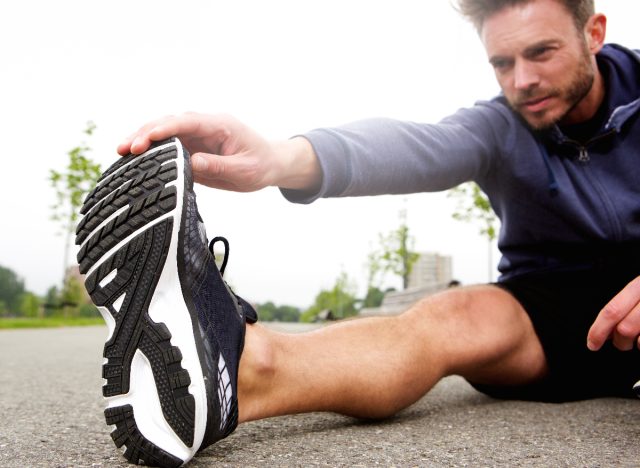
The first of these bad exercise habits that cause pain is not warming up. Warm-ups prepare your body for exercise by increasing blood flow and flexibility. Dedicate a few minutes to dynamic stretches before your workout to protect your muscles and joints.
"Warming up may seem optional, but it's vital, especially as you get older or are untrained," says MacPherson. "Warming up with movements that mimic the activity you'll be doing helps prepare your joints, muscles, and nervous system for the work ahead. What's more, warm-ups that include increasing your heart rate will help you perform your best more efficiently during your training."
Using incorrect form

Proper form is paramount for effective and safe workouts. According to the National Institutes of Health, incorrect form can strain muscles and joints, causing pain and spiking your injury risk.
"Using incorrect forms during lifting or when using cardio machines can lead to pain and injuries. For instance, you could have lower back pain if your spine flexes under load at the bottom of a squat because you go too deep or let your hips shoot up first during a deadlift. Likewise, using poor form while on a rowing machine or cycle can lead to back, neck, or hip strain," explains MacPherson.
Not breathing correctly

Whether you're lifting weights, running, or stretching, not breathing correctly can create unnecessary tension and impact performance. A recent study published in Sports noted the critical importance of maintaining steady, controlled breathing while exercising to regulate the amount of carbon dioxide and oxygen in your body and help ensure oxygen delivery to the muscles.
"If you don't learn to breathe and brace correctly during lifting, especially with heavy weights, you could end up in pain," cautions MacPherson. "If you aren't bracing, your spine will not be as stable and could hyperextend or flex in a way that could strain it and lead to pain. In extreme cases, you could also have a hernia if you haven't appropriately braced and don't breathe optimally during lifts."
Not taking rest days

You may think you're doing yourself a favor by outworking everyone in the gym, but overtraining can lead to burnout and injuries.
MacPherson explains, "Not taking time to rest and recover can lead to pain due to sore and overused joints, tendons, and muscles. Your body undergoes stress and damage during training that, if allowed to recover, will lead to adaptations that make you stronger. However, if you don't allow your body to repair, you can increase the damage beyond your ability to recover, leading to pain."
Pushing yourself too hard
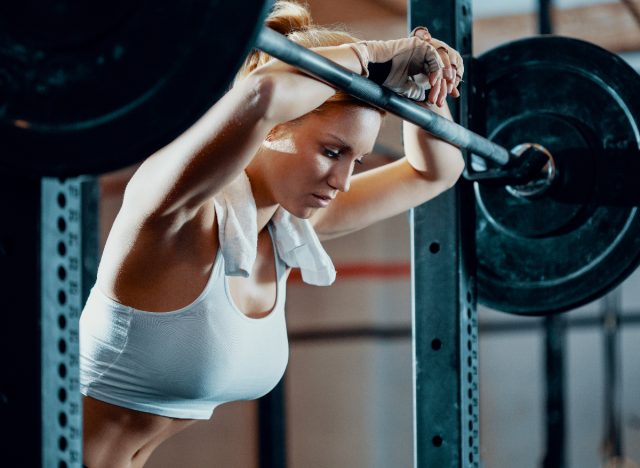
While pushing yourself is required for growth and fitness, going overboard can lead to injury and setbacks. Listen to your body, and learn when to dial back the intensity.
"Pushing too hard too often can lead to pain and potential injuries. You should leave room in the tank (or reps in reserve) during most of your training when lifting or performing cardiovascular work. Pushing too close to failure or beyond your limits often is a recipe for pain," says MacPherson.
Adding excess volume
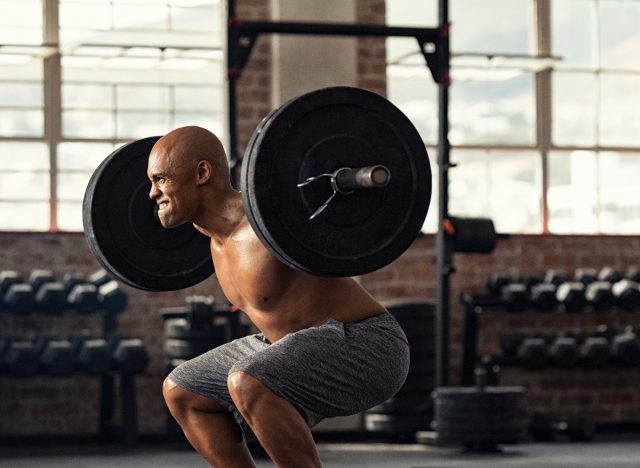
More isn't always better. Too much volume in your workout routine can strain muscles and hinder progress. Avoid overexerting yourself by increasing intensity and volume gradually.
"Adding more volume than you need to adapt is a waste of time and effort," says MacPherson. "Your body might not recover on time for your next session, and you'll not benefit from this wasted work, also called junk volume. Progress your workouts slowly over time, allowing your body to adapt and only add volume when needed to continue seeing results."
Neglecting mobility
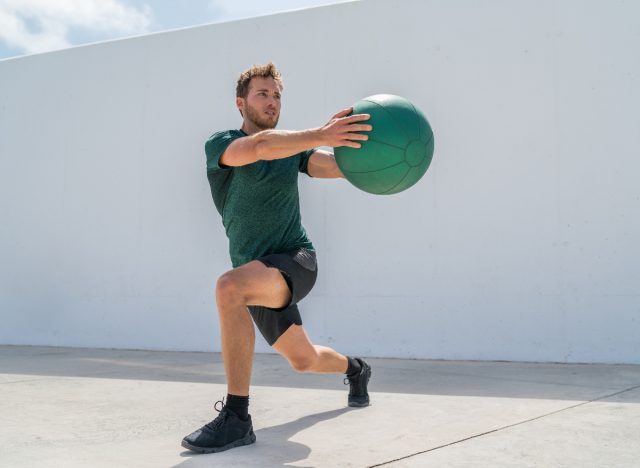
Mobility is an often overlooked aspect of fitness that, when done consistently, can significantly improve flexibility and joint health while reducing pain and injury risk.
"Mobility is different from flexibility—it's a range of motion you can perform with strength and stability," says MacPherson. "Ensuring you're strong and stable through proper ranges of motion will help prevent pain and injury."
Not crosstraining
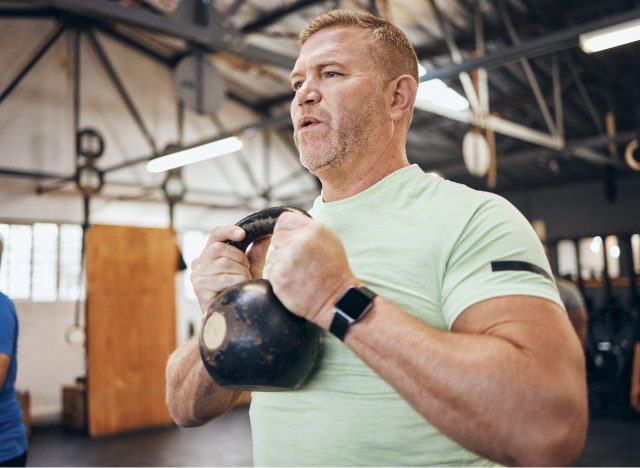
Variety is essential for well-rounded fitness. According to the American Academy of Orthopaedic Surgeons, crosstraining (doing various forms of exercise) challenges different muscles and reduces the risk of overuse injuries.
MacPherson says, "People highly dedicated to one form of activity may ignore crucial fitness, strength, and mobility areas that may lead to pain. For instance, if you're a runner, you could have knee, shin, foot, or hip pain if you don't perform other types of strengthening or cardiovascular work. Adding variety to your training is vital, including strength exercises to avoid pain."
Wearing improper footwear
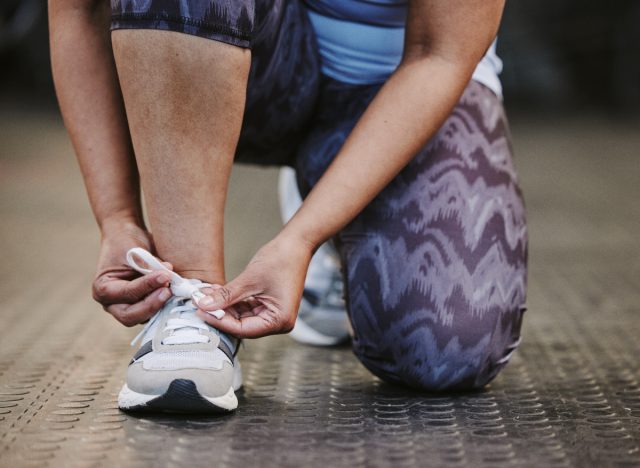
Several studies show that proper footwear can protect against pain and injuries.
"Wearing incorrect footwear during training activities can lead to instability and pain," says MacPherson. "If you lift weights, supportive, flat, and wide footwear that allows you to spread your toes and grip the ground is critical. If you wear running shoes with cushioned soles and curved forefoots, you will be very unlikely to achieve proper form, which can result in pain or injury."
Choosing the wrong exercises
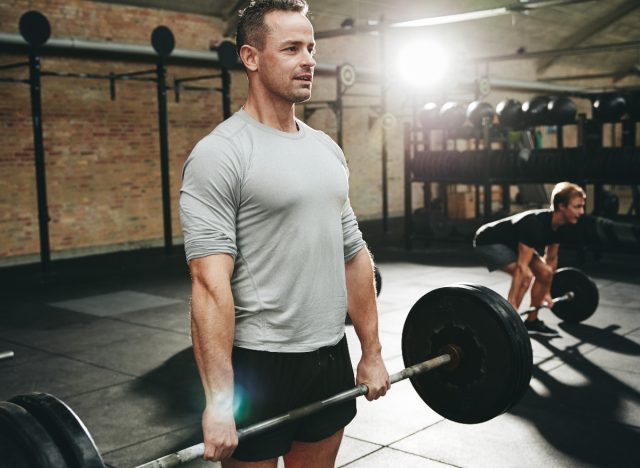
The last of these bad exercise habits that cause pain is choosing the wrong exercises. Not all exercises are suitable for everyone. Know your limitations, and choose exercises that align with your fitness level and goals to maximize results and minimize discomfort.
"Some exercises or variations are unsuitable for your anatomy or current mobility limits," says MacPherson. "There's never a reason to perform a particular lift if it causes pain; you can constantly adjust your grip, stance, or variation to find something that works with your anatomy."
- Source: https://www.cdc.gov/mmwr/volumes/72/wr/mm7215a1.htm
- Source: https://www.ncbi.nlm.nih.gov/pmc/articles/PMC5833972/
- Source: https://www.niams.nih.gov/health-topics/kids/healthy-muscles
- Source: https://www.ncbi.nlm.nih.gov/pmc/articles/PMC10224217/
- Source: https://www.ncbi.nlm.nih.gov/pmc/articles/PMC7039038/









